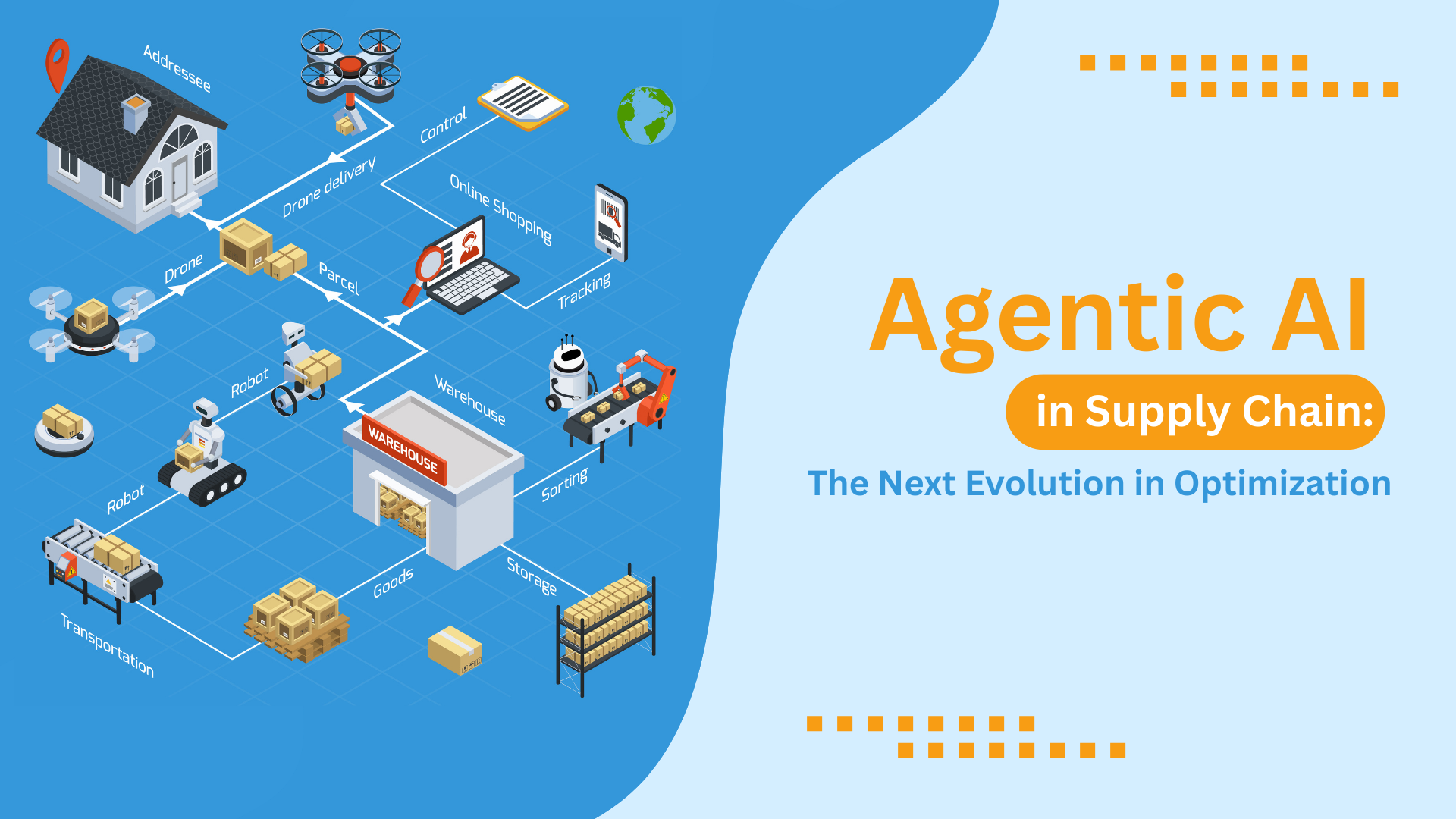Introduction
The supply chain has never been more complex. From geopolitical changes to unexpected weather, today’s businesses have constant disruption, and traditional systems produced on static rules and reactive analysis are simply not enough. They can tell you that there is a problem, but they can’t fix it on their own.
This is the place where the next development comes in AI supply chain management. We go beyond traditional automation, which is a new class of technology that not only analyzes data, it works on it.
Agentic AI gives intelligent agents the right to make real-time, goal-oriented decisions autonomously. The result is a self-healing, self-optimizing chain that can be consistently beneficial to change and maintain the summit with minimal human intervention. This blog post will find that this powerful change is basically to multiply the future of logistics and operations.
What is Agentic AI and How Does it Differ?
Agentic AI is an advanced type of artificial intelligence that serves to achieve a high level and act independently. Unlike traditional AI, which is reactive and limited by a stiff set of rules, agentic AI is active and adaptable.
Think of it this way:
- Traditional automation and analytics are like a skilled but passive assistant. You give it a specific instruction (“Run this report”, “Send this email”) or ask it a question (“What is our inventory level?”). It stands out in a simple, predetermined work or gives an insight into people to act. The system is entirely dependent on your input and cannot adapt or start new tasks if conditions change.
- Agentic AI is an active, intelligent teammate. You give it a high-level purpose (“reduce the incoming shipping cost”), and it takes it from there. AI agents detect and analyze new carriers, monitor market fluctuations, and then, significantly, switch a real-time order to a new shipment, for example, without the need to manually approve each step, so you want to monitor the market turns, and then, you will break the target. It learns from the surroundings, fits new data, and even orchestrates the work on other systems to achieve the goal.
Agentic AI is only limited by the target or the objectives. For companies that want to implement this technology, expert Agentic AI development services are important to create and integrate these intelligent systems into the infrastructure of the existing supply chain. They ensure that agents can communicate with all different systems (ERP, TMS, WMS) and take the necessary autonomy and safety measures to function effectively.
The Role of Agentic AI in Supply Chain Management
Agentic AI plays a transformative role in controlling the supply chain by transferring an active, autonomous from a reactive, humanly dependent model. Here are seven main roles, Agentic AI can play in the system:
1. Autonomous Planner
An agent can be given a high-level goal, such as “production and storage optimization”. Subsequently, autonomy integrates data from demand forecasts, supplier time, and production program to create a customized, real-time master plan. If a variable changes, it automatically fills and adjusts without human intervention.
2. Proactive Risk Manager
Instead of a human being manually checking for risk, a remedy is consistent global news, weather patterns, and geopolitical data scans. If it detects a potential disturbance, such as a port or a supplier’s financial crisis, it can find alternative suppliers and continuously start mitigation strategies as a veterinarian.
3. Intelligent Logistics Orchestrator:
This agent optimizes transport and logistics beyond the simple route scheme. It can monitor live traffic and weather, and then automatically re-route shipments, and inform all stakeholders to avoid real-time delay and reduce costs.
4. Self-Optimizing Operator
In a warehouse or production facility, an agent can manage and direct the robot system. It can adapt to the storage setup depending on the demand for real-time, automated packaging and packing processes, and rebalance inventory across locations to ensure efficiency and reduce overstock or stockouts.
5. Dynamic Procurement Agent
Given a goal of “buying raw materials at the lowest price”, an agent autonomously searches for suppliers, can interact on contracts based on real-time market data, and can carry out the purchasing orders. It can also work with other agents to ensure that the purchased goods are obtained and stored correctly.
6. Predictive Maintenance Manager
Agents can monitor the health of vehicles and machines using IoT sensor data. By analyzing this data, they can predict potential tool errors and plan preventive maintenance, reduce expensive downtime, and ensure continuous operating flow.
7. The Collaborative Communicator
Agentic AI can already act as a digital bridge between quiet departments and external partners. For example, an agent for sale can automatically communicate a demand girl to a production agent, which in turn coordinates with a procurement agent and a logistics agent to fulfill the order. It delays and removes manual handover, creating a spontaneous, integrated system.
Conclusion
The supply chain has never been more complex, where traditional systems produced on static rules and reactive analyses are often less effective when facing modern instability. This is where the next development in AI supply chain management begins. We move beyond devices that provide insight to a new paradise: Agentic AI. This technique is intelligent, goal-oriented, and oriented means it not only strengthens data, but also works on it, creates a self-healing and confidence network. This is not just a new feature; This is a fundamental change that will redefine AI logistics optimization and take companies from a reactive past to an active, flexible future.
